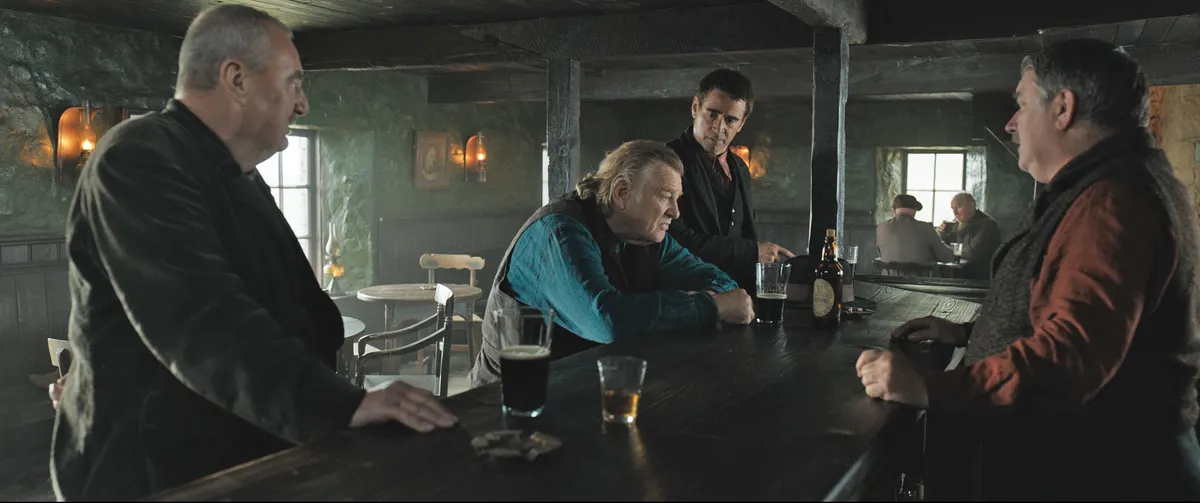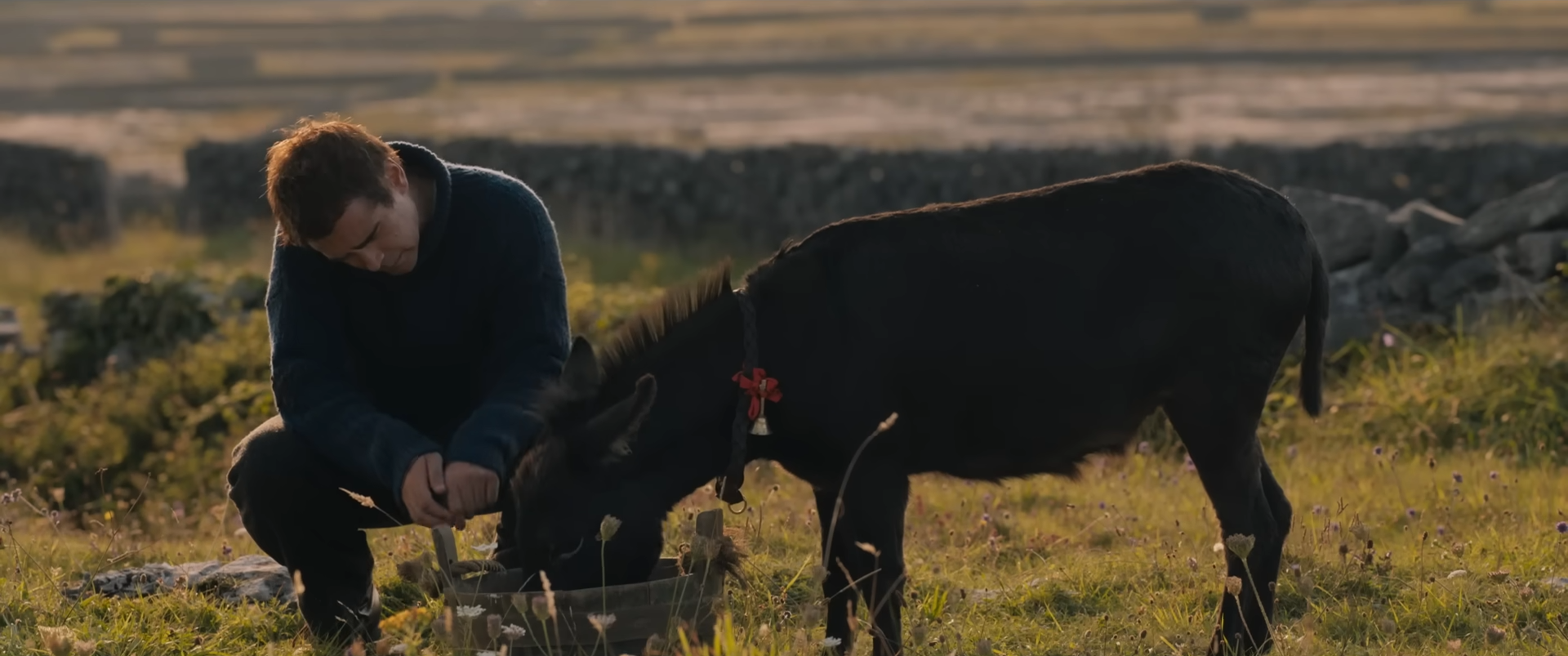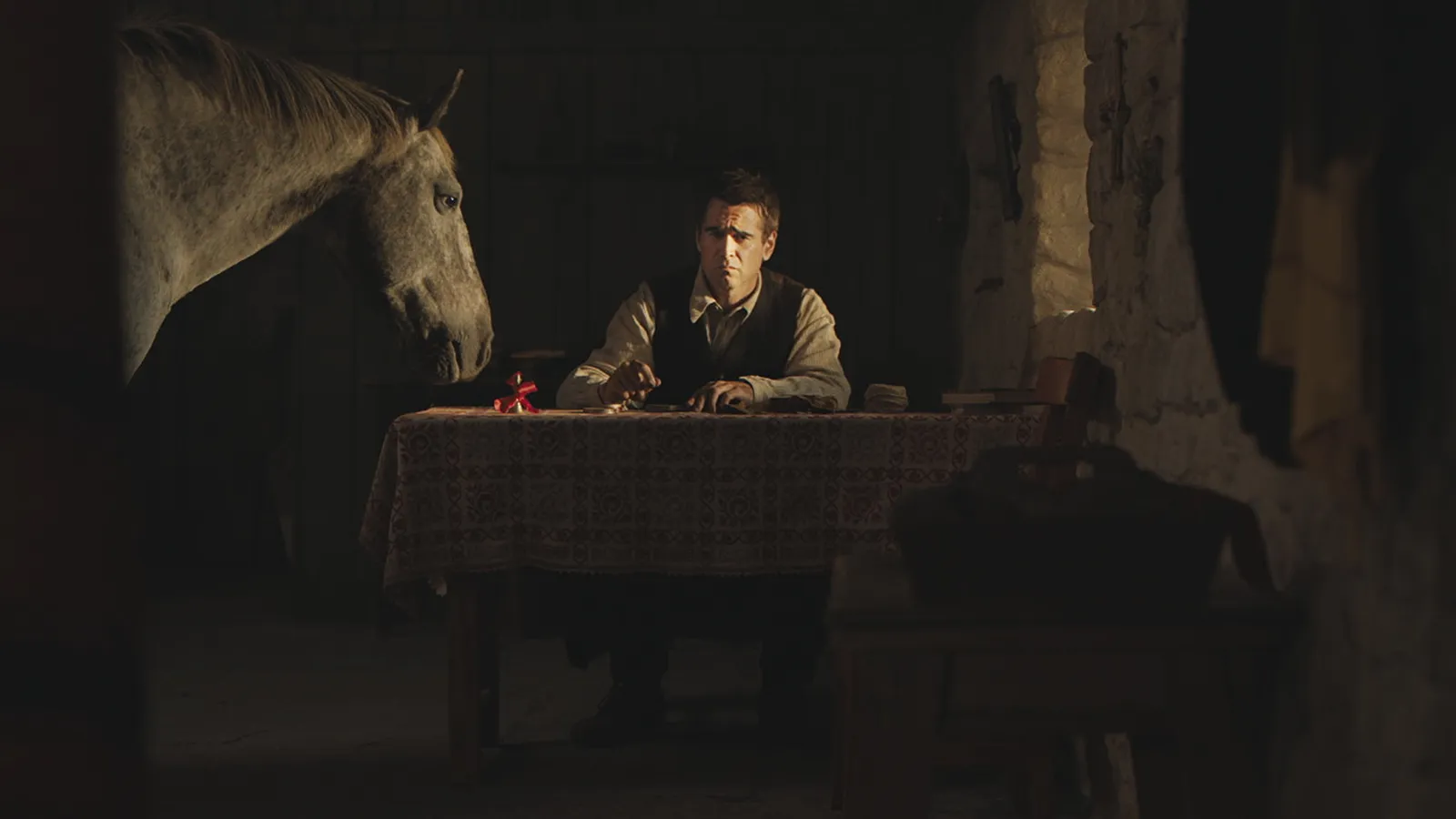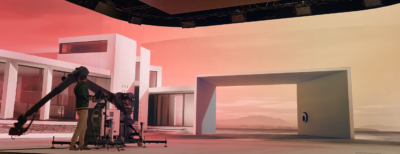
« The Banshees of Inisherin » est présenté hors compétition au Festival EnergaCamerimage. A cette occasion, le réalisateur Martin McDonagh (« Three Billboards outside Ebbing, Missouri », « Bons Baisers de Bruges », « Sept Psychopathes ») retrouve son chef opérateur Ben Davis (« Kick-Ass ») et confine ses comédiens sur une île au large des côtes irlandaises : Colin Farrel, Brendan Gleeson, Kerry Condon et Barry Keoghan.
L’histoire commence lorsque Colm refuse de rejoindre son meilleur ami Pádraic, au pub, un dimanche après-midi. Il lui demande expressément de ne plus jamais lui adresser la parole.
L’incompréhension de Pádraic ne désarme pas l’entêtement de Colm, et c’est la vie de tous les habitants de l’île, animaux inclus, qui se trouve dérangée.

Entre vieux garçons, dans l’Irlande de 1923, les mots de Martin McDonagh (également auteur de théâtre) sont comptés – et chaque mot compte. L’humeur change aussi vite que passent les nuages sur les paysages à couper le souffle de l’ouest irlandais.
En plaçant cette histoire de rupture douloureuse sur le terrain de l’amitié, le réalisateur balaye les codes du film sentimental et écrit son histoire d’une manière neuve et pure.

Le film traduit le mode de vie modeste et routinier des habitants d’Inisherin par une mise en scène et une esthétique minimalistes. Après son atterrissage sur l’île, le spectateur est installé dans un univers calme et posé. La caméra est rarement mobile, sinon au stabilisateur de manière fluide, accompagnant les personnages d’un lieu à l’autre : le pub, la maison de Colm, la maison de Pádraic et Siobhán. Elle s’adapte aux personnages et reste fixe lorsque les personnages le sont.
Les protagonistes gardent un calme déroutant même lors d’événements troublants ou violents. La caméra aussi. La souffrance est montrée en ombres chinoises comme un jeu d’enfant. À rebours des conventions sur le film d’époque, le look est moderne. Le découpage a été storyboardé en amont, et inspiré par des westerns classiques et plus récents (voir).

L’équipe, plutôt réduite, est partie pour 8 semaines de tournage en Irlande. Le casting principal étant lui aussi coincé sur l’île, Ben Davis s’en souvient comme d’une situation bénéfique, qui lui permettait une vraie flexibilité par rapport aux aléas climatiques.
En évoquant la région et ses paysages, Ben Davis affirme qu’il est incapable d’exprimer en mots ce qu’il a ressenti là-bas. Le film s’attache a retranscrire ce sentiment visuellement ainsi que par le travail du son et le choix des musiques.
Au festival Camerimage, il évoque la disparition du visionnage des rushes en projection : dommage pour les plans larges, car les images ne sont vues que sur des petits écrans pendant une longue partie de la fabrication du film. Ici, les paysages infinis et majestueux ont imposé des plans ouverts avec une grande profondeur de champ. L’Arri Alexa LF y exprime toute son identité. Combinée à des optiques Signature Prime, et des zooms Angénieux, elle est en symbiose parfaite avec le style du film.

L’espace et la nature ont leurs propres relations avec les personnages. Les séquences intimes ont lieu dehors. Les lieux de la représentation publique sont le pub obscur, où les pintes de bières s’accumulent pour marquer le temps qui passe, et l’église, où la confession n’est jamais complètement privée.
Le film a été tourné à deux caméras, pour libérer au maximum le jeu des acteurs, visiblement embarqués corps et âme dans ce projet.
Le film sortira en France le 28 décembre.
____
« The Banshees of Inisherin »: a stunning intimate drama
« The Banshees of Inisherin » is presented out of competition at the EnergaCamerimage Festival. On this occasion, the director Martin McDonagh (« Three Billboards outside Ebbing, Missouri, » « In Bruges, » « Seven Psychopaths ») reunites with his cinematographer Ben Davis (« Kick-Ass ») and keeps his actors on an island off the coast of Ireland: Colin Farrel, Brendan Gleeson, Kerry Condon, and Barry Keoghan.
The story begins when Colm refuses to join his best friend, Pádraic, at the pub one Sunday afternoon. He expressly asks him never to speak to him again.
Pádraic’s lack of understanding does not disarm Colm’s stubbornness, and the lives of everyone on the island, animals included, are disrupted.
Between two old bachelors in the Ireland of 1923, the words of Martin McDonagh (also a playwright) are counted, and they do count. The mood changes as quickly as the clouds pass over the breathtaking scenery of the Irish West. By placing this story of a painful break-up at a friendship level , the director wipes out the codes of sentimental film and writes his story in a new, pure way.
The film depicts the modest and mundane way of life of the inhabitants of Inisherin through a sober mise en scène and minimalist aesthetic. After landing on the island, the viewer is settled into a calm and composed universe. The camera is rarely mobile, apart from the stabilizer in a fluid way, accompanying the characters from one place to another: the pub, Colm’s house, and the house of Pádraic and Siobhán. It adapts to the characters and remains still when the characters are.
The protagonists maintain a puzzling calm even during disturbing or violent events. So does the camera. Suffering is shown as shadow puppet as if it were child’s play. The look is modern, the period setting relies on the script above all else. The shot list has been storyboarded beforehand and inspired by classic and more recent westerns (link).
The crew (rather small) left for 8 weeks of shooting in Ireland. The main cast was also stuck on the island, and Ben Davis remembers it as a beneficial situation, which allowed him real flexibility with regard to the climatic uncertainty.
Referring to the region and its landscapes, Ben Davis states that he is unable to express in words what he felt there. The film wants to transcribe this feeling visually, as well as through the sound work and the choice of music. Here, the infinite and majestic landscapes demanded wide shots with a great depth of field. The Arri Alexa LF expresses all its identity. Combined with Signature Prime lenses and Angenieux zooms, it is in perfect symbiosis with the style of the film.
At the Camerimage festival, Ben Davis mentions the fact that during the shooting, the dailies are no longer projected to the crew: a pity for the wide shots, which will be seen on small screens.
Space and nature have their own relationship with the characters. The intimate sequences take place outside. The places of public representation are, on the one hand, the pub, a dark place where pints of beer accumulate to mark the passing of time. And the church, on the other hand, where confessions are never completely private.
The film was shot with two cameras to free the actors’ performance as much as possible, who were obviously involved in this project body and soul.
The film will be released in France on December 28
-
Partager l'article


